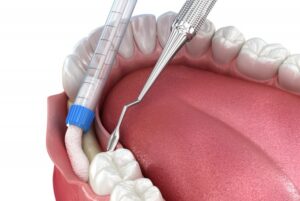
Dental implants have revolutionized the way we replace missing teeth. They offer a stable, long-lasting solution that looks and feels like a natural tooth. But not everyone is immediately ready to receive implants. One common requirement before implant placement is a bone graft, a procedure that builds up the jawbone to ensure the implant has a strong foundation. But why is this step necessary for some patients? Let’s take a closer look.
Why Bone Matters for Dental Implants
Dental implants are titanium posts that are surgically inserted into the jawbone, where they act like artificial tooth roots. For an implant to be successful, it must fuse with the bone in a process called osseointegration. Without enough bone, the implant may not anchor securely, leading to failure.
Think of it like planting a fence post – if the soil is too shallow or weak, the post won’t stay upright. Similarly, if the jawbone is too thin, soft, or has deteriorated over time, it won’t support an implant properly.
Causes of Bone Loss in the Jaw
Several factors can lead to inadequate bone volume in the jaw:
- Tooth loss: When a tooth is missing, the bone in that area starts to shrink. This process, called bone resorption, begins as soon as a tooth is lost and continues over time.
- Periodontal (gum) disease: Advanced gum disease can destroy the supporting bone structure around teeth.
- Infection or trauma: Past injuries or untreated dental infections can lead to localized bone loss.
- Developmental issues: Some people naturally have thinner jawbones or bone irregularities that make implant placement difficult without grafting.
What is a Bone Graft?
A bone graft is a procedure where your dentist or oral surgeon adds bone material to your jaw. This material may come from your own body, a donor, synthetic materials, or animal sources. Over time, the grafted material encourages your natural bone to grow and integrate with it, restoring volume and density. Depending on the extent of bone loss, healing can take 3 to 6 months before your jaw is ready for the dental implant.
Do All Implant Patients Need Bone Grafts?
Not necessarily. If you still have healthy bone where the implant is planned, a graft may not be needed. However, imaging tools like 3D scans and X-rays help your dentist assess bone quality and determine whether grafting is necessary.
In some cases, a small bone graft can be done at the same time as implant placement, saving time and reducing the number of surgeries.
The Benefits of Getting a Bone Graft
While it might seem like an extra step, bone grafting is essential for:
- Improving implant stability and longevity.
- Preventing facial collapse from bone loss.
- Enhancing overall oral health and function.
Skipping this step when it’s needed could result in implant failure or the need for more complex procedures later.
If your dentist recommends a bone graft before dental implants, it’s to ensure the best long-term outcome for your smile. A strong foundation leads to a stronger, more reliable implant, and that’s a step well worth taking for a permanent, confident solution to missing teeth.
About the Author
From the time that Dr. Leeza Stein started her training at the Texas A&M College of Dentistry, she has prioritized obtaining as much knowledge to help her patients, no matter their needs. As a result, she is familiar with many fields in dentistry, including endodontic (root canal treatment), Invisalign, and treatment planning, and she works with implant specialists in the area that have proven their excellence to ensure success for her patients. Would you like to discuss dental implants or other services with Dr. Stein? Contact LS Smiles online or call the Rockwall office at 972-771-2213 to schedule an appointment.
